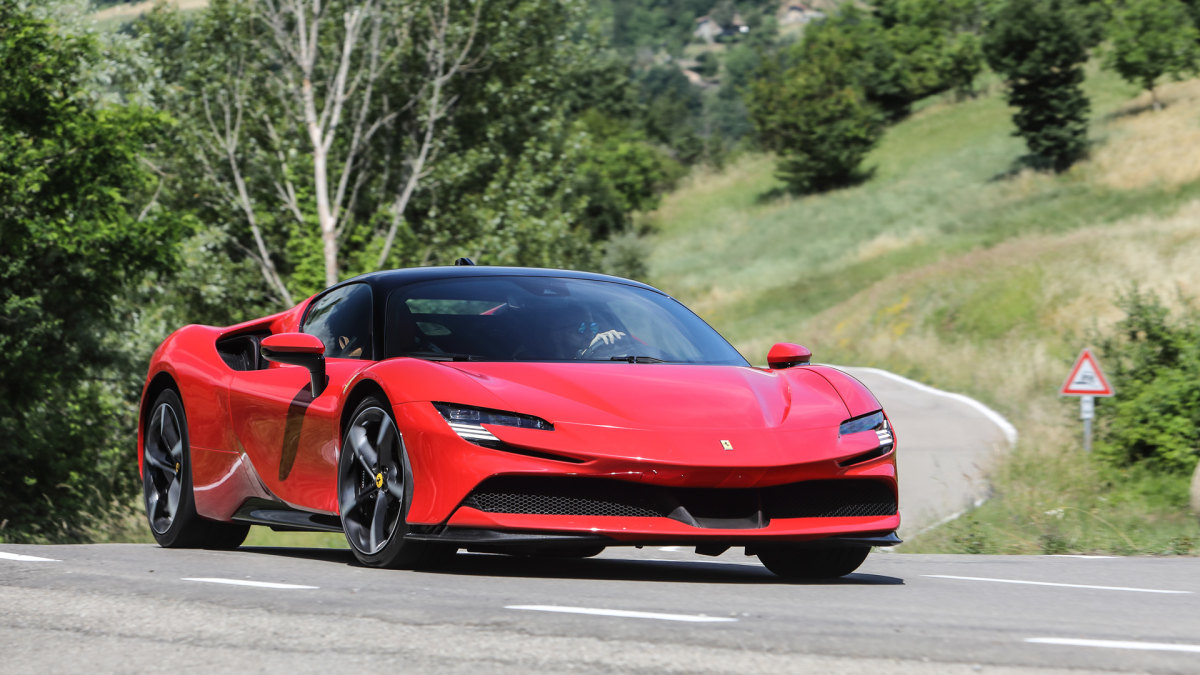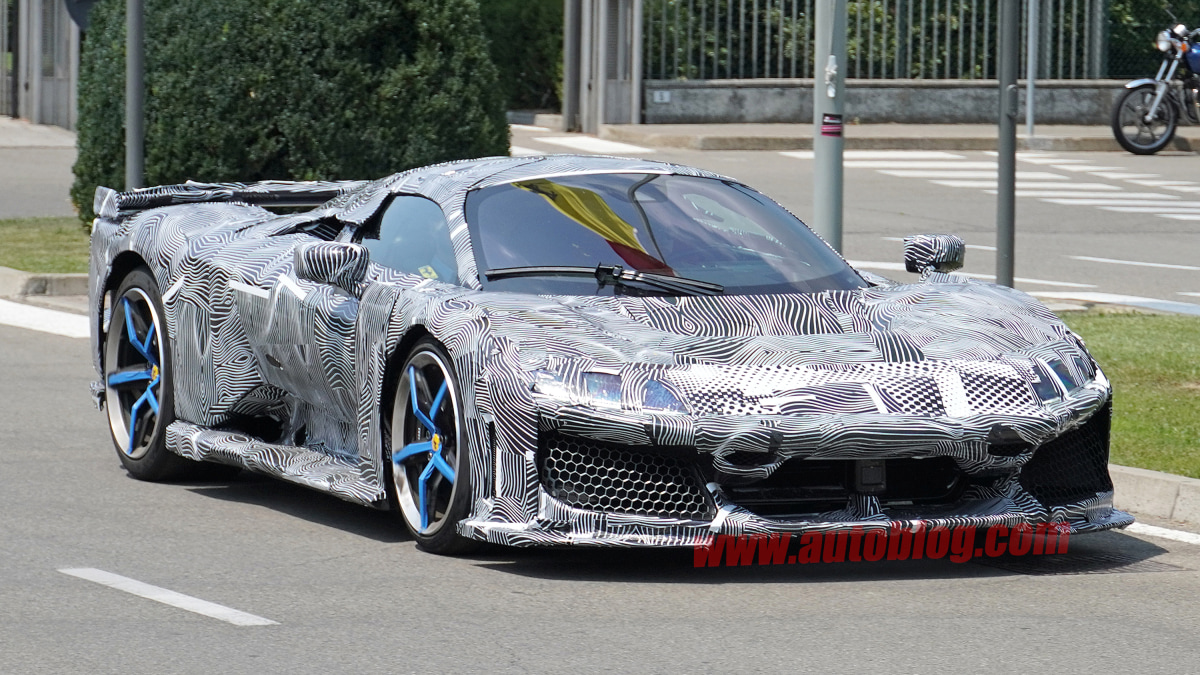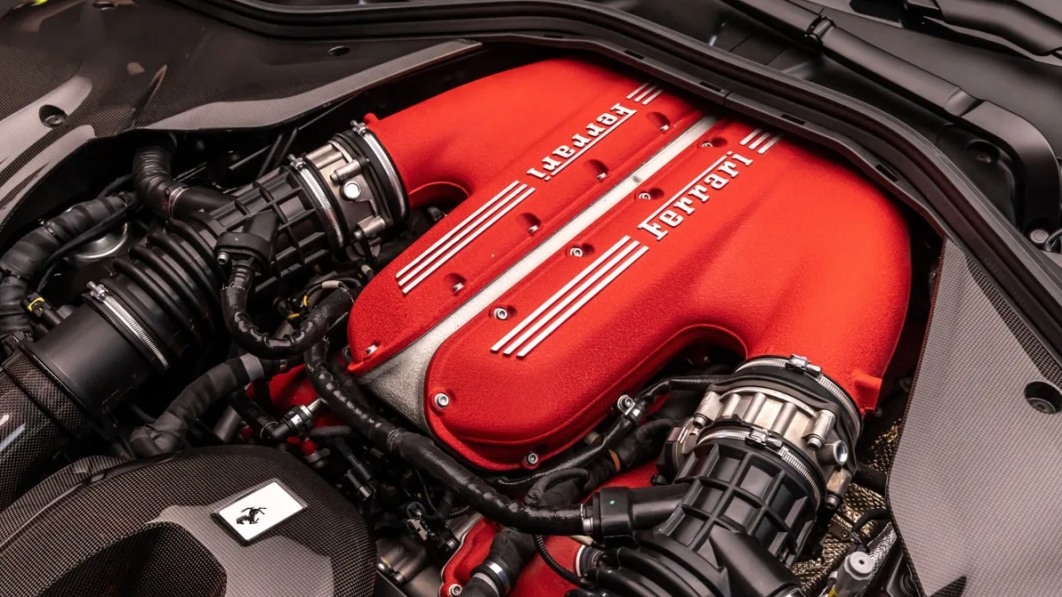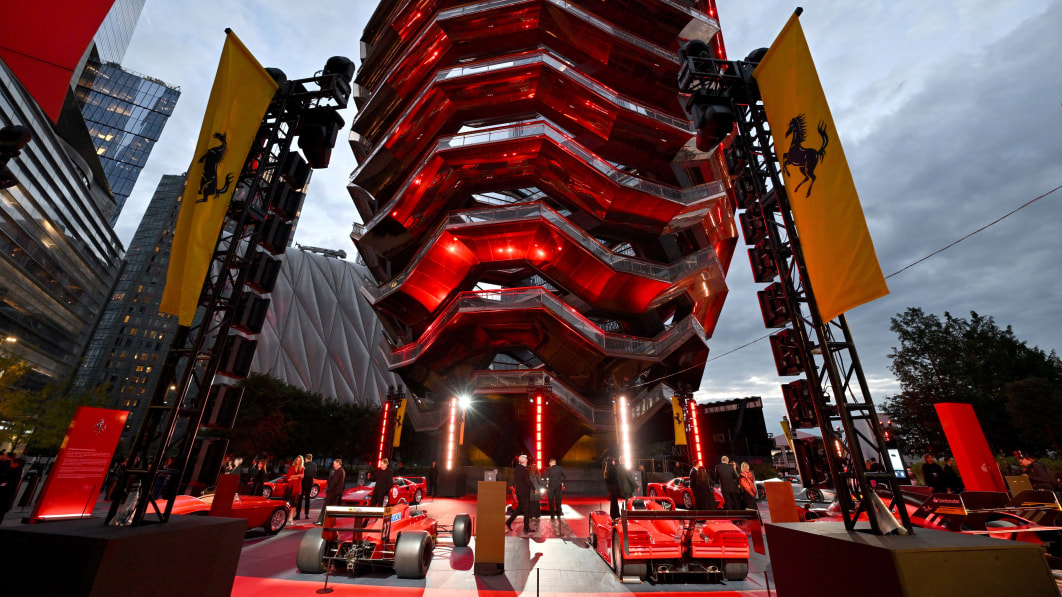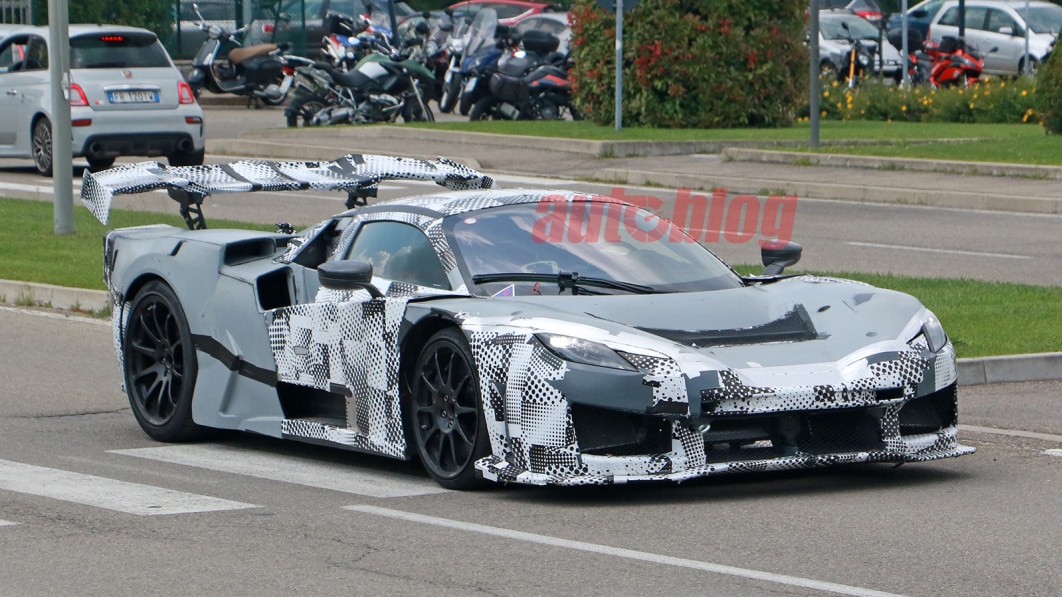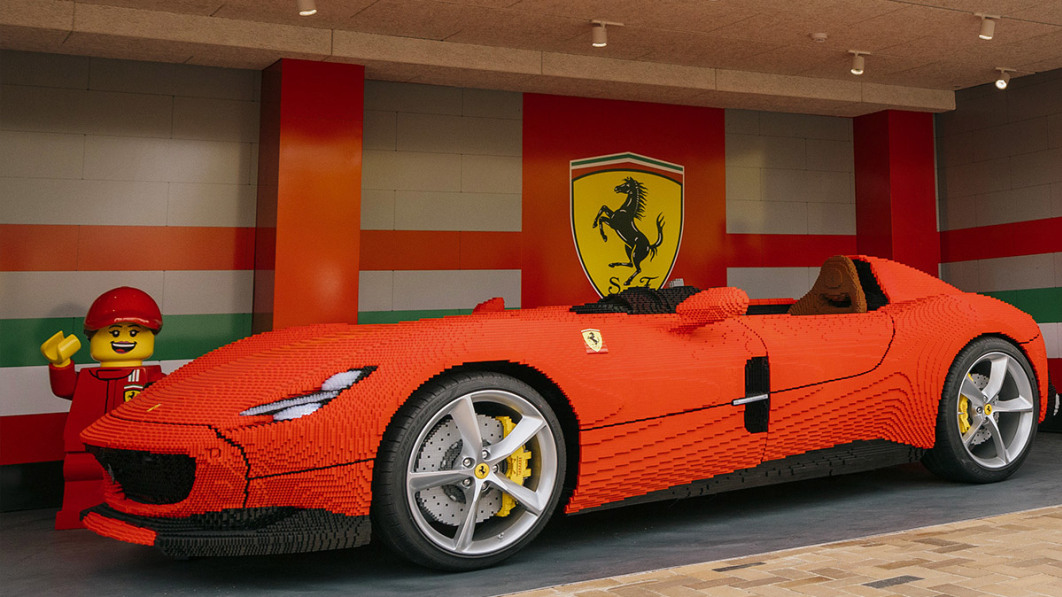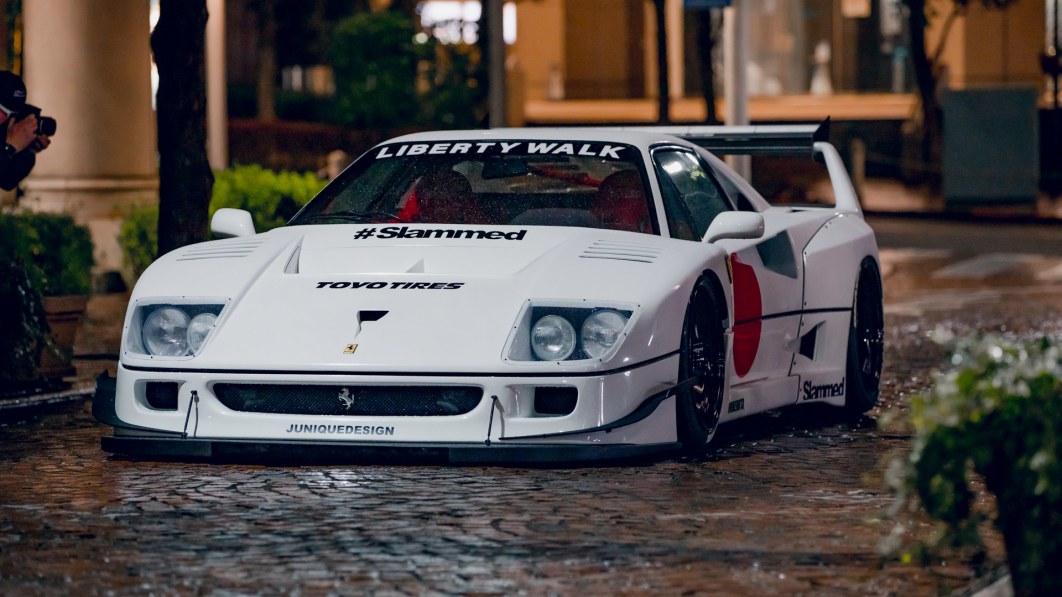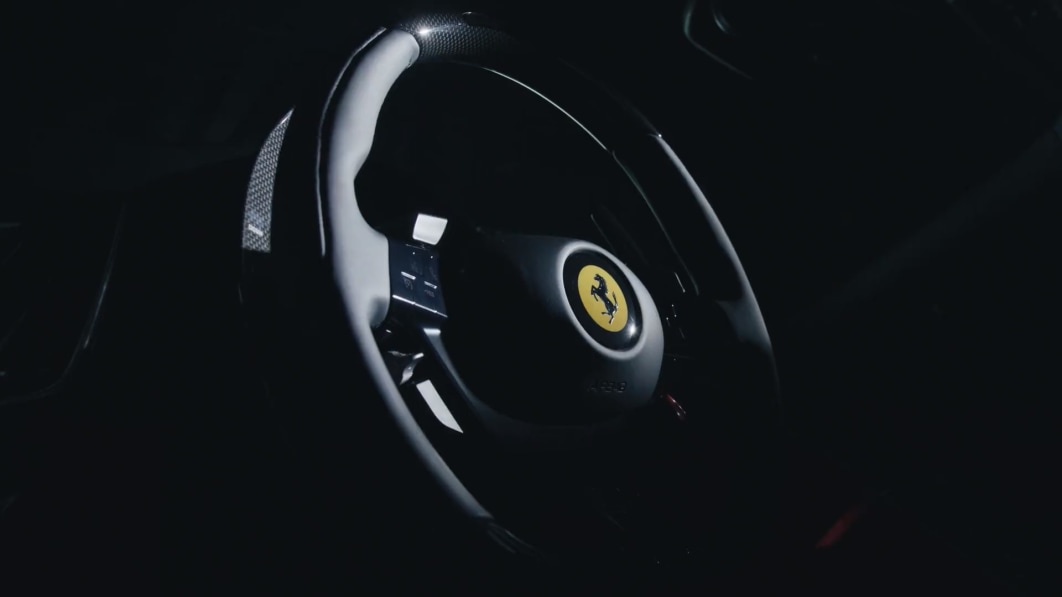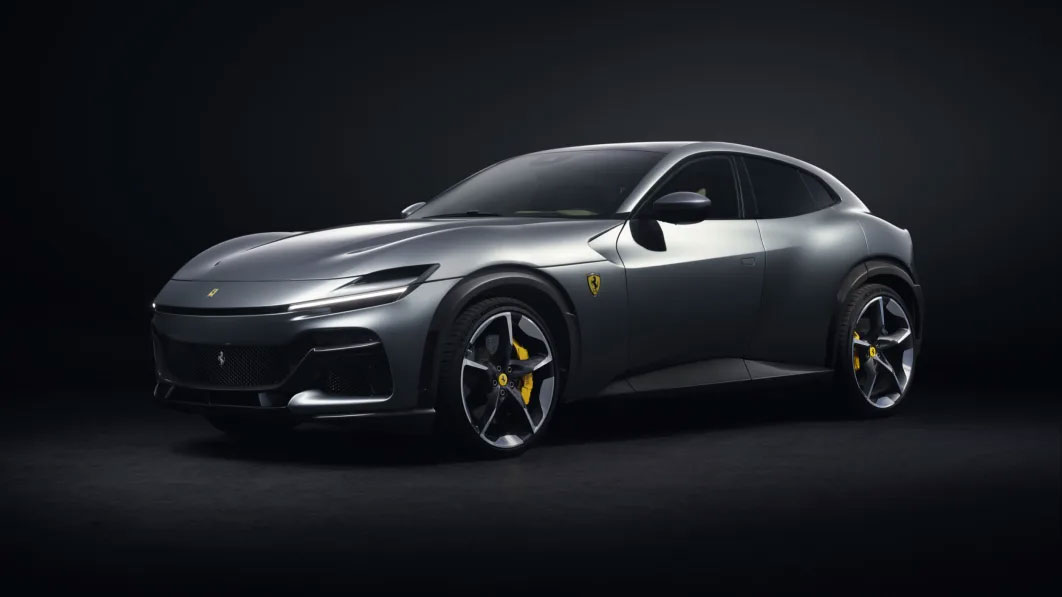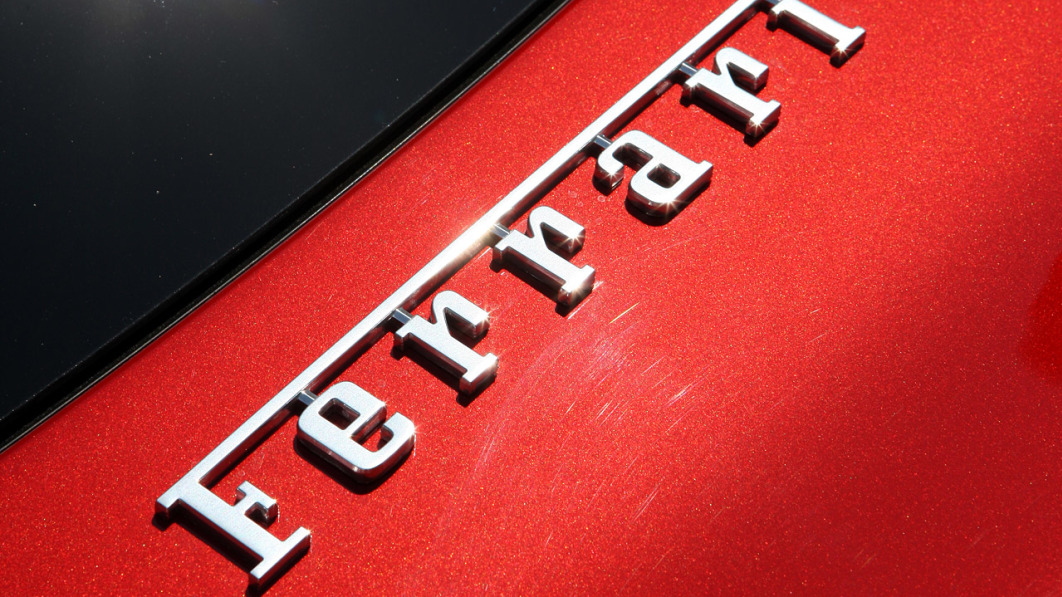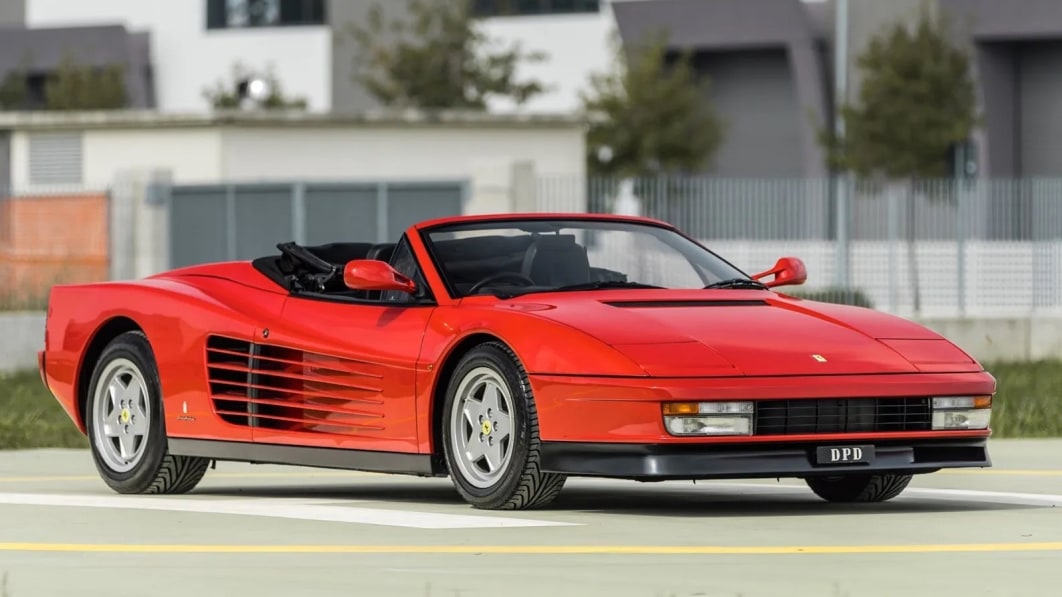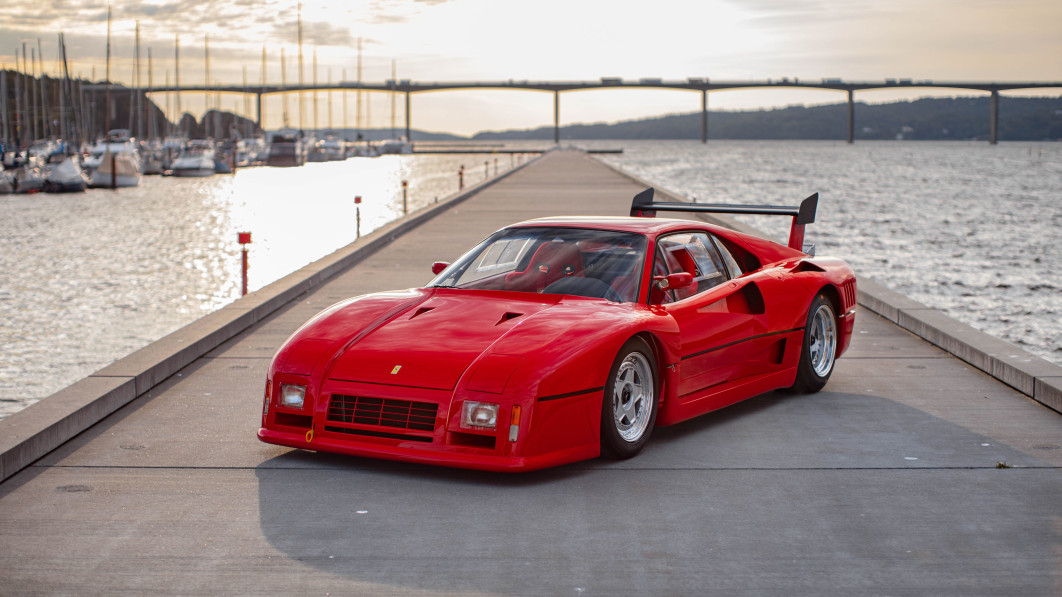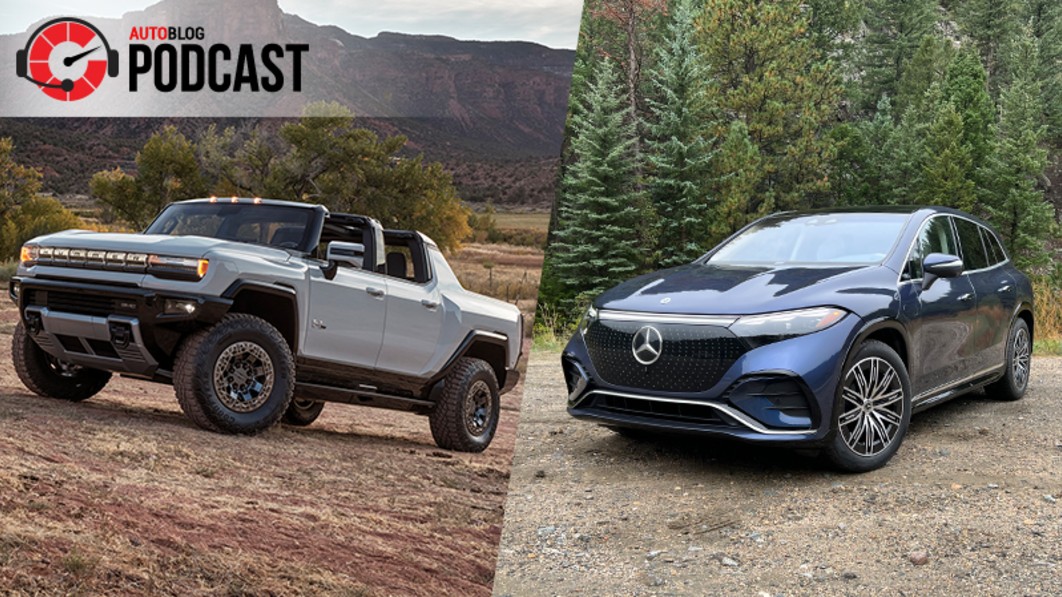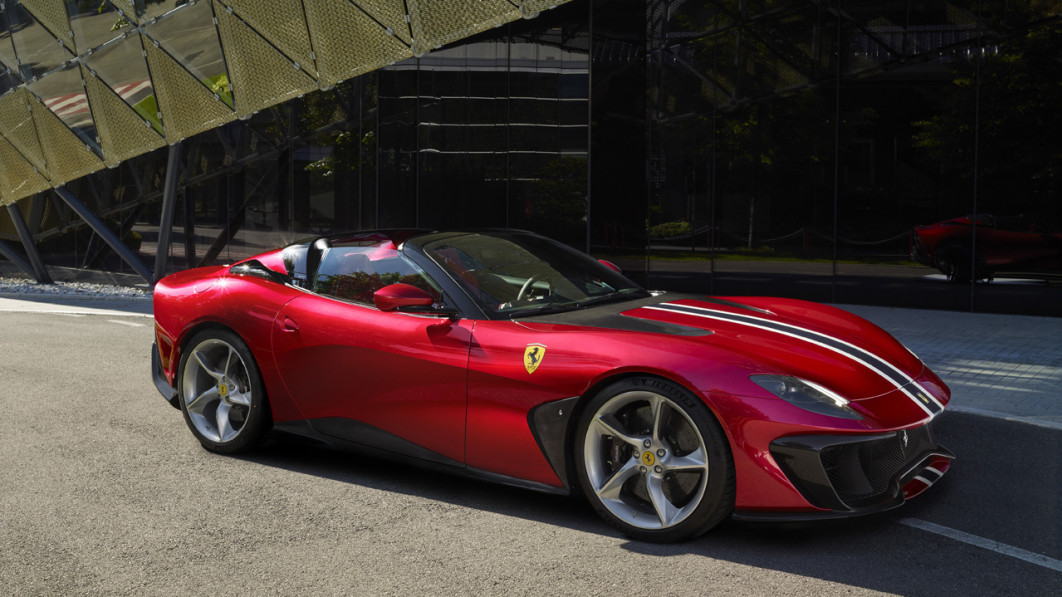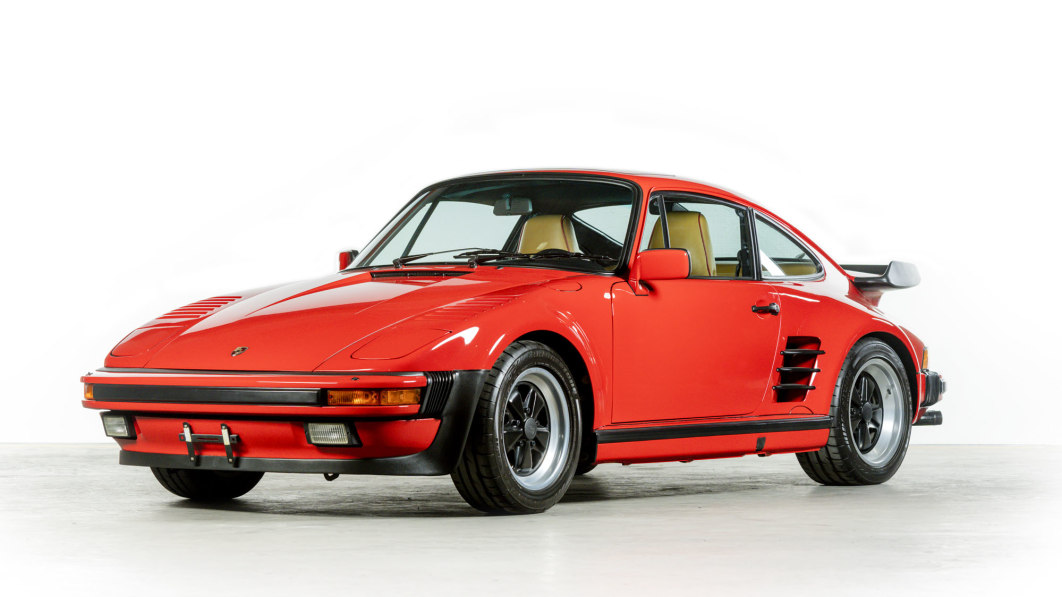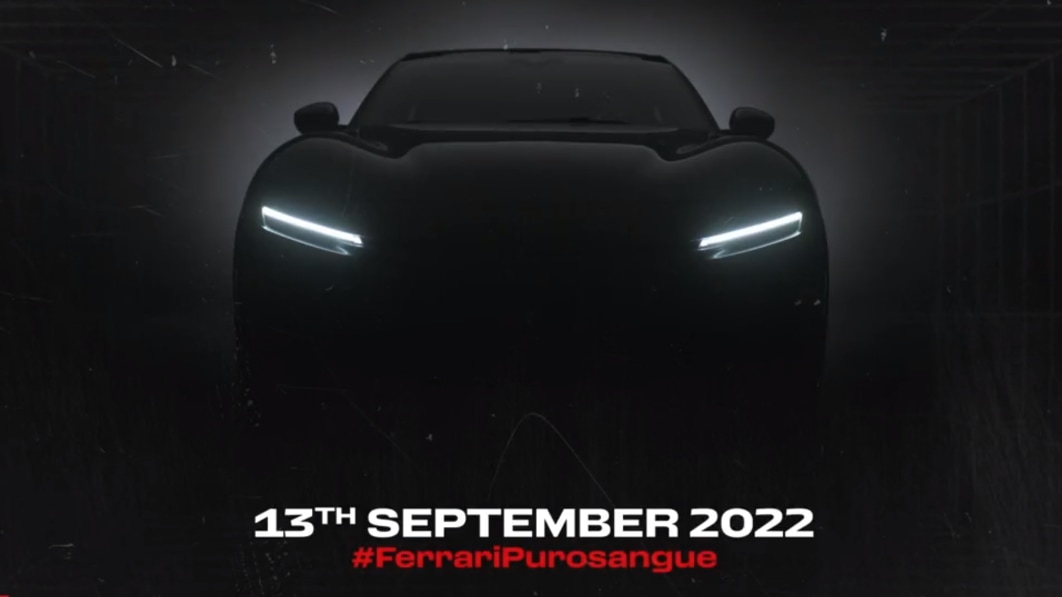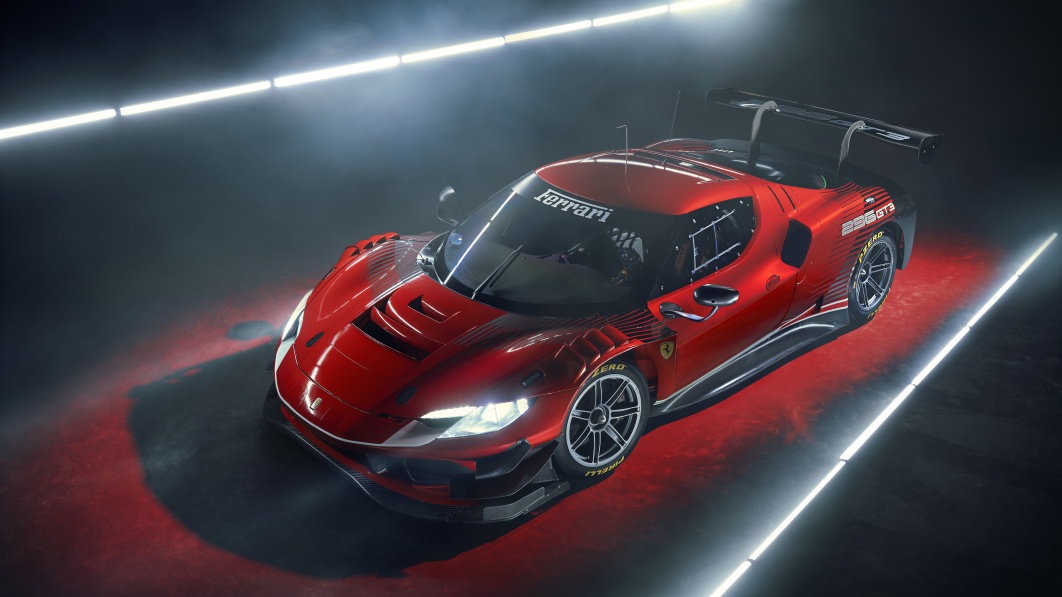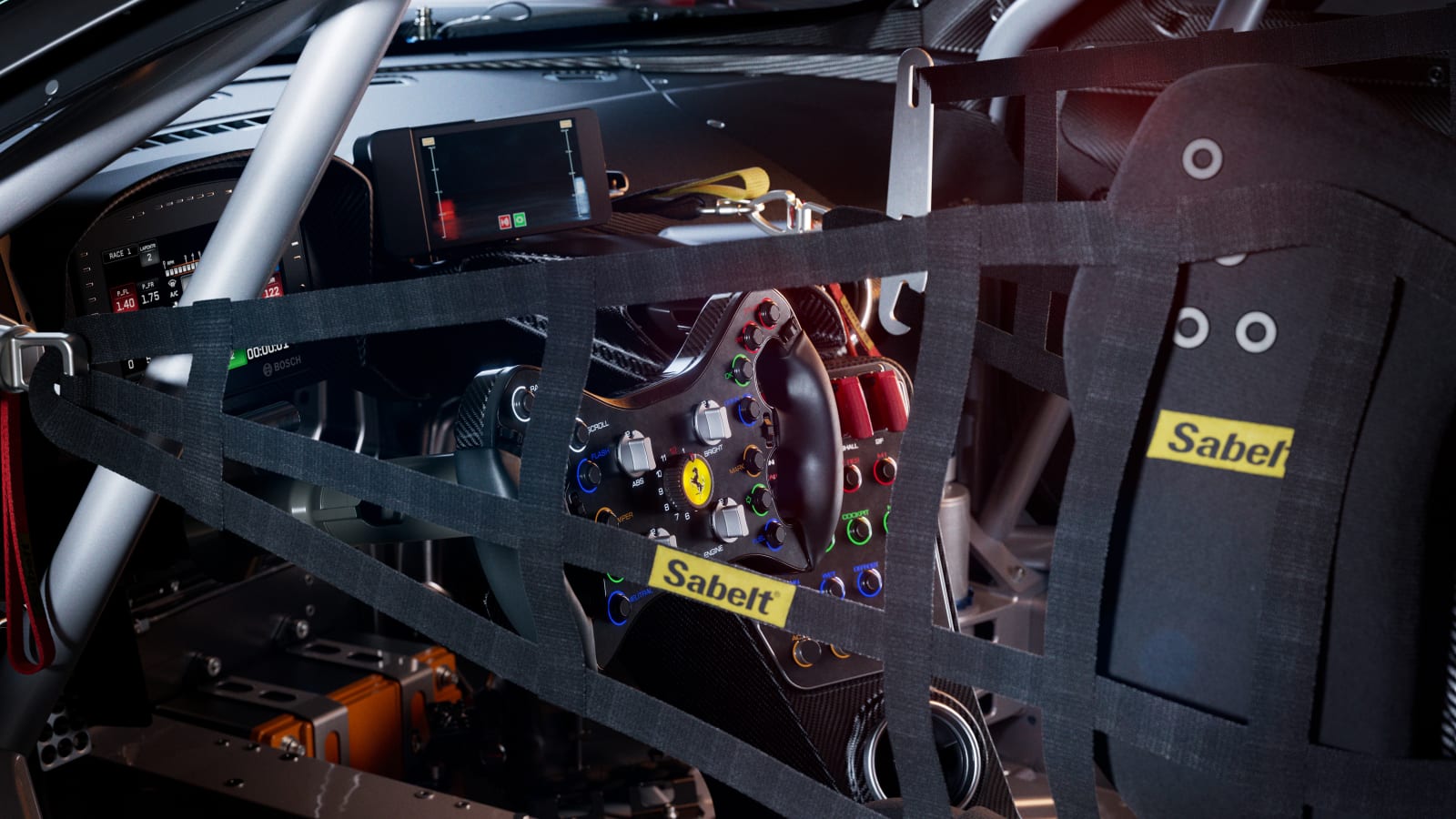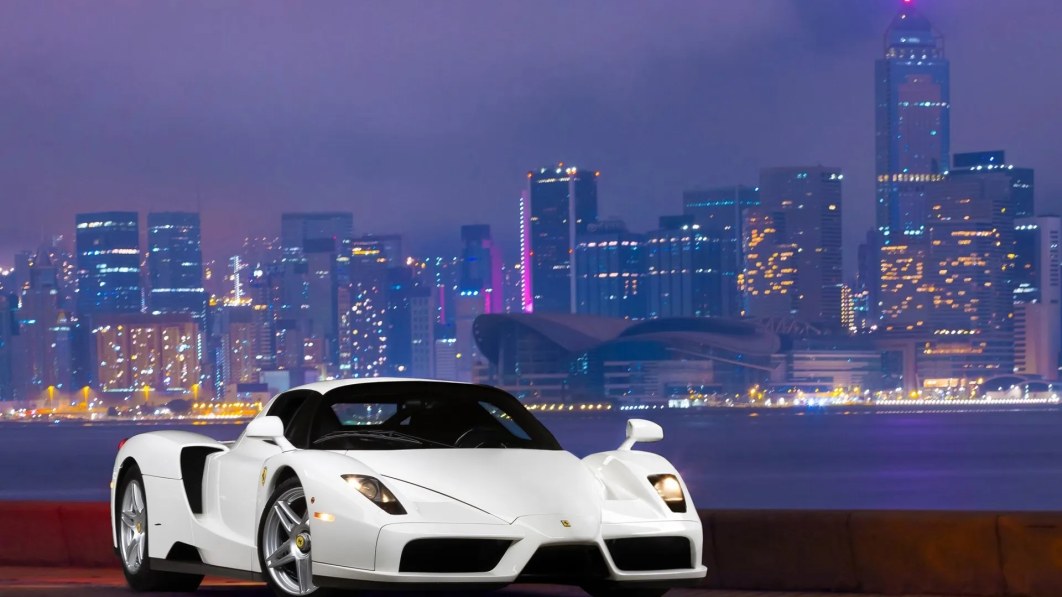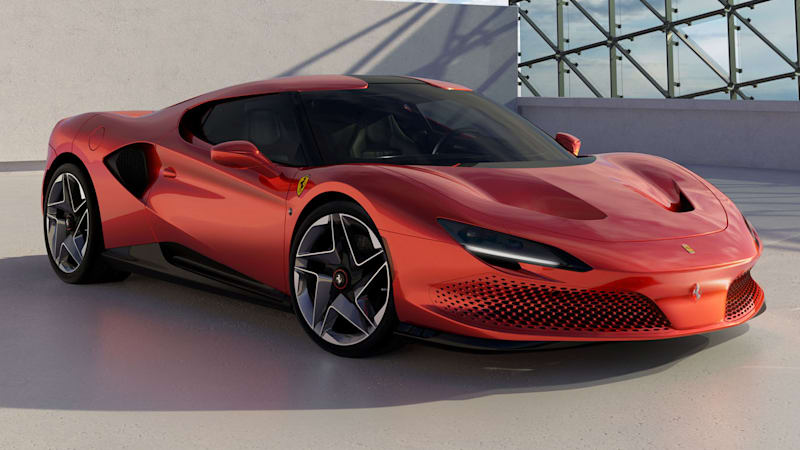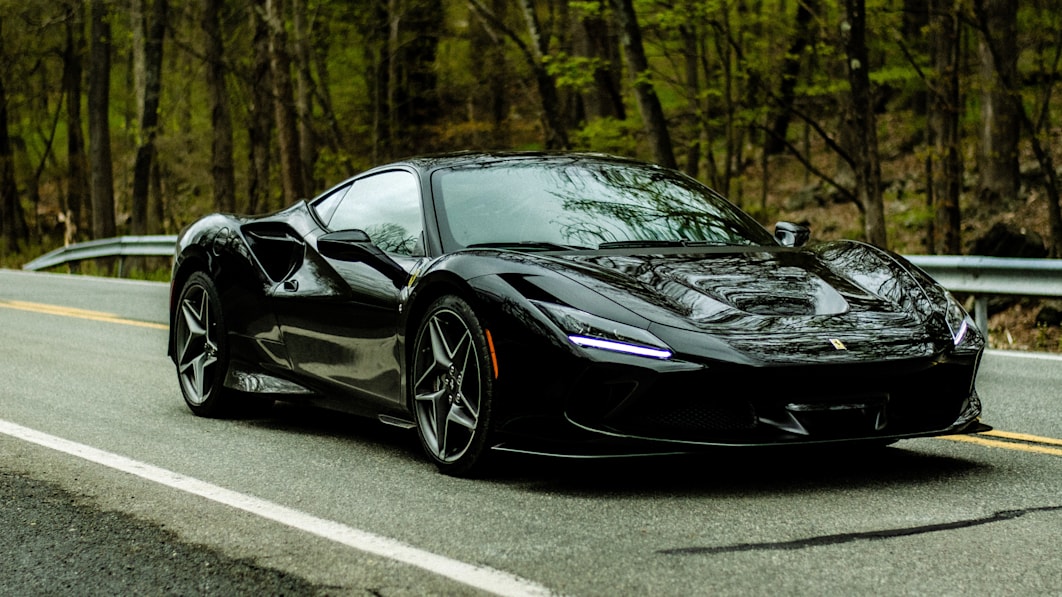Ferrari’s quarterly report revealed the next chess moves coming to the lineup. The SF90 Stradale, the automaker’s first hybrid and a coupe so important to the brand that it shared its name with Ferrari’s Formula 1 car that year, is out of production after five years on the market. The convertible version, the SF90 Spider, remains on sale. The hardtop has no direct successor — that is, a mid-engined V8. However, the mid-engined 296 GTB with its V6 hybrid powertrain could be viewed as a taking up the mantle. The outgoing SF90 produces 986 horsepower from a 4.0-liter V8 aided by three electric motors, sending that power to both axles. The 296 gets a 3.0-liter V6 and one motor to make a combined 819 hp and 546 lb-ft, all of it sent to the rear wheels only.
The 812 GTS waves goodbye as well, this the open-topped version of the 812 Superfast and another launch from 2019. It does have a direct successor, the 12Cilindri that debuted a few months ago. The dirty dozen in the new car deliver 819 horsepower, up from 788 in the 812 Superfast and GTS, matching the track-focused 812 Competizione. Ferrari pegs 0-62-mph acceleration in 2.9 seconds, a 7.9-second rip to 124 mph, and a top speed beyond 211 mph.
The Roma, another coupe that launched in 2019, is preparing for its exit but not done with production. Along with the 812 Competizione, Ferrari says the duo are “approaching the end of the life cycle.” Only one of them can still be ordered, though; Roma books remain open, the 812 Comp’s production run was entirely spoken for the moment that car hit the public airwaves.
That leaves the best sellers, the Roma Spider, Purosangue SUV, and 296 to continue doing the heavy lifting. Specials such as the Daytona SP3 in the Icona series and customer versions of the 499P Modificata add their share to the automaker’s engorged bank balance, raising revenues and profits compared to Q2 of 2023 thanks to deliveries that were 2.7% higher. There’s more good stuff in the immediate pipeline while we wait for word on what follows the SF90 and Roma coupes, a new hypercar that might be called F250 supposed to debut before year’s end and a battery-electric model reportedly arriving next year.

